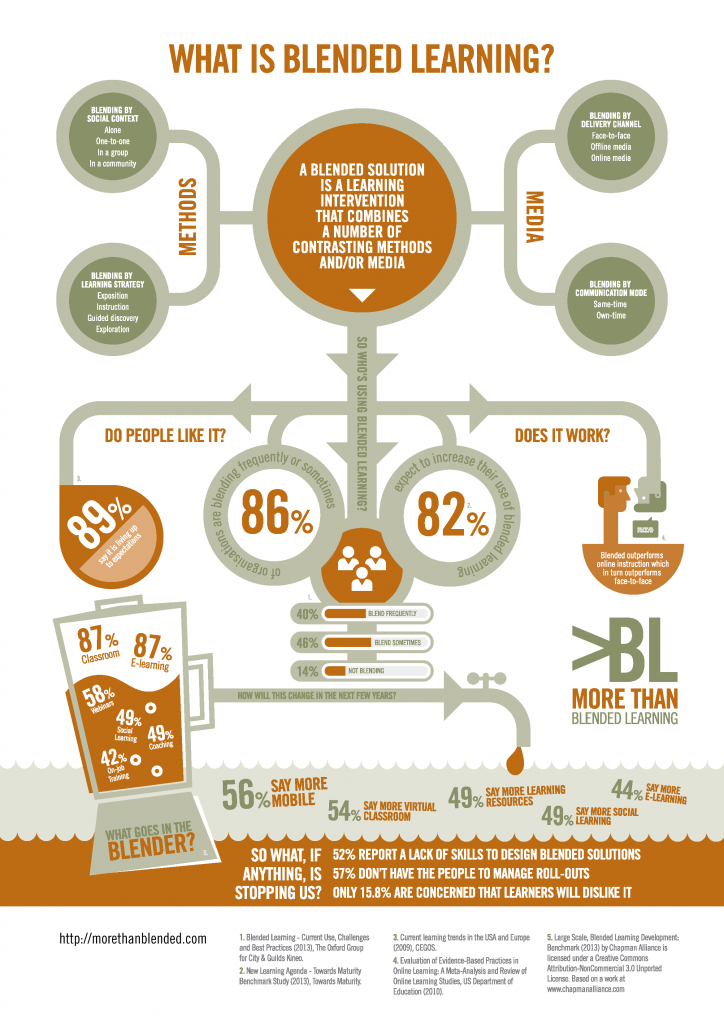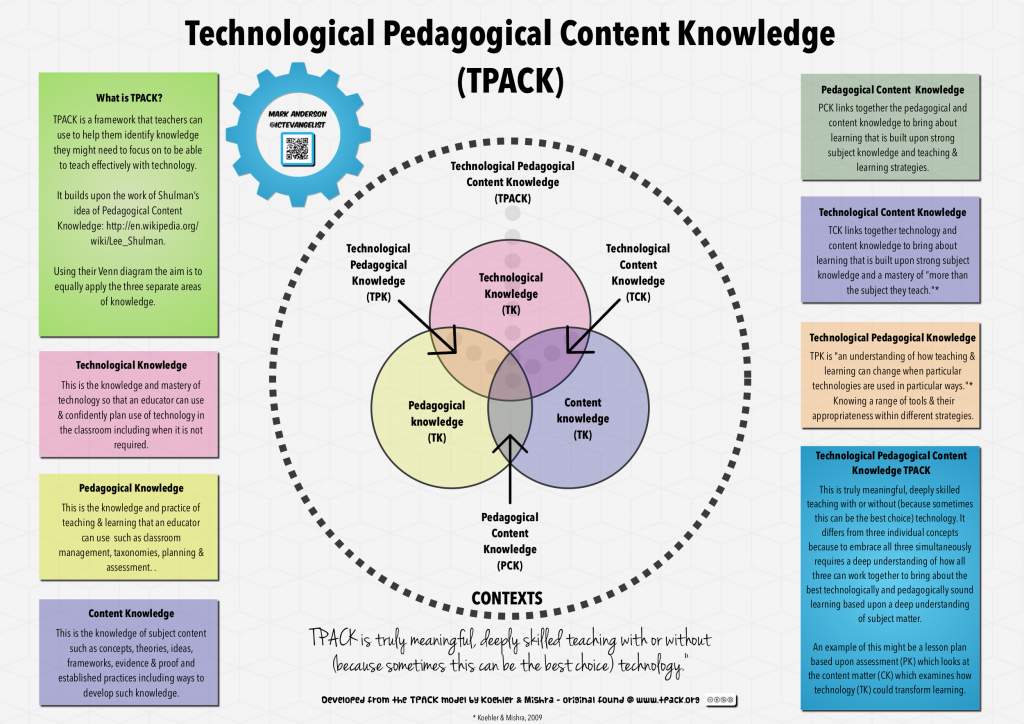
Throughout this class, I have researched ways to increase my students’ understanding of Computer Programming Concepts. By incorporating the ISTE Standards, I have been able to create innovative opportunities through a diverse set of technology. Working through the strategies of CodeHS, pair programming and the idea of student-run programming forums which are in addition to my instruction I realize that I’m implementing a Blended Learning Environment.
The website Educational Technology and Mobile Learning define Blended Learning as where “students and teachers get to experiment with a multimodal teaching method in which the digital and virtual learning is blended with the face-to-face” (2015). Blended Learning is one of the major learning concepts that came about as an outcome of technology integration in education. A common misconception is that teachers are being replaced with technology, however, that is far from the truth. The infographic to the left was designed to explain what blended learning is. Looking back at integrating the ISTE standards through CodeHS (Creativity and innovation), Pair Programming (Communication and collaboration), Industry forums(Research and information fluency) and flowcharts( Critical thinking, problem-solving, and decision) the integration of these elements into my classroom have created a rich learning environment. Of the different models, the rotational model is more reflective of what I do: use different technologies combined with face-to-face instruction to maximize the student’s learning. Even though I’m not using the formal idea of learning stations, the instruction goes beyond by being available to the students at any time, to review or to apply. I’ve noticed that my students are becoming more active learners and some have even challenged themselves to move beyond where the majority of the class is. (Dreambox, 2013)
I have learned to implement different technologies to address students’ learning needs, especially when it comes to teaching the difficult and confusing concepts. By creating resources and strategies for students to understand the concepts, I believe we addressed the Technological, Pedagogical, and Content Knowledge (TPACK). The key is being effective in teaching, with technology and understanding to teach the content; knowing where the misunderstandings can happen and how to in multiple ways make it clearer. The integration of technology as that additional piece has made it easier to find strategies to reach everyone.
Bibliography
6 Models of Blended Learning – DreamBox Learning. (2013, October 23). Retrieved March 02, 2016, from http://www.dreambox.com/blog/6-models-blended-learning#sthash.DtG3vfcq.dpuf
Berger, R. (2015, June 23). Educational Leadership in the Era of Blended Learning. Retrieved March 01, 2016, from http://edtechreview.in/voices/interviews/2001-educational-leadership-in-the-era-of-blended-learning?
Blended Learning Visually Explained for Teachers ~ Educational Technology and Mobile Learning. (2015, March 17). Retrieved March 06, 2016, from http://www.educatorstechnology.com/2015/03/blended-learning-visually-explained-for.html?utm_content=bufferb1118 Charvat, P. M. (2016, March 1).
Blended Learning Helps Students at Different Cognitive Levels. Retrieved March 06, 2016, from http://www.huffingtonpost.com/mylea-charvat-phd/blended-learning-helps-st_b_9350242.html?utm_hp_ref=education
International Society for Technology in Education. (2016). Standards for students. Retrieved from http://www.iste.org/standards/ISTE-standards/standards-for-students Ruben Puentedura on Applying the SAMR Model. (n.d.). Retrieved from https://www.commonsensemedia.org/ Wong, W. (2014).
How technology enables blended learning. EdTech Focus on K-12. Retrieved from http://www.edtechmagazine.com/k12/article/2014/04

